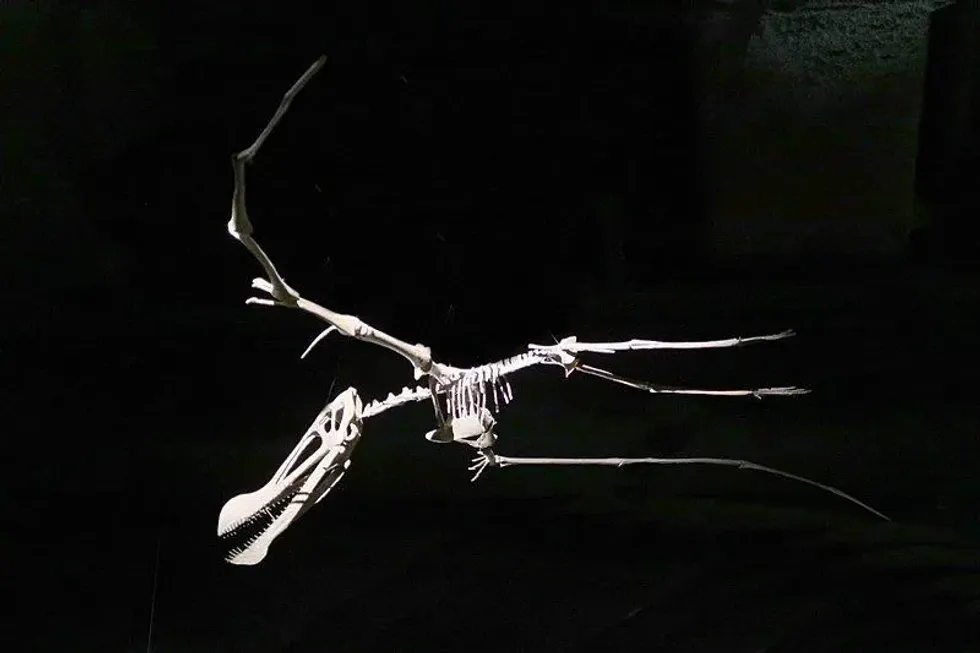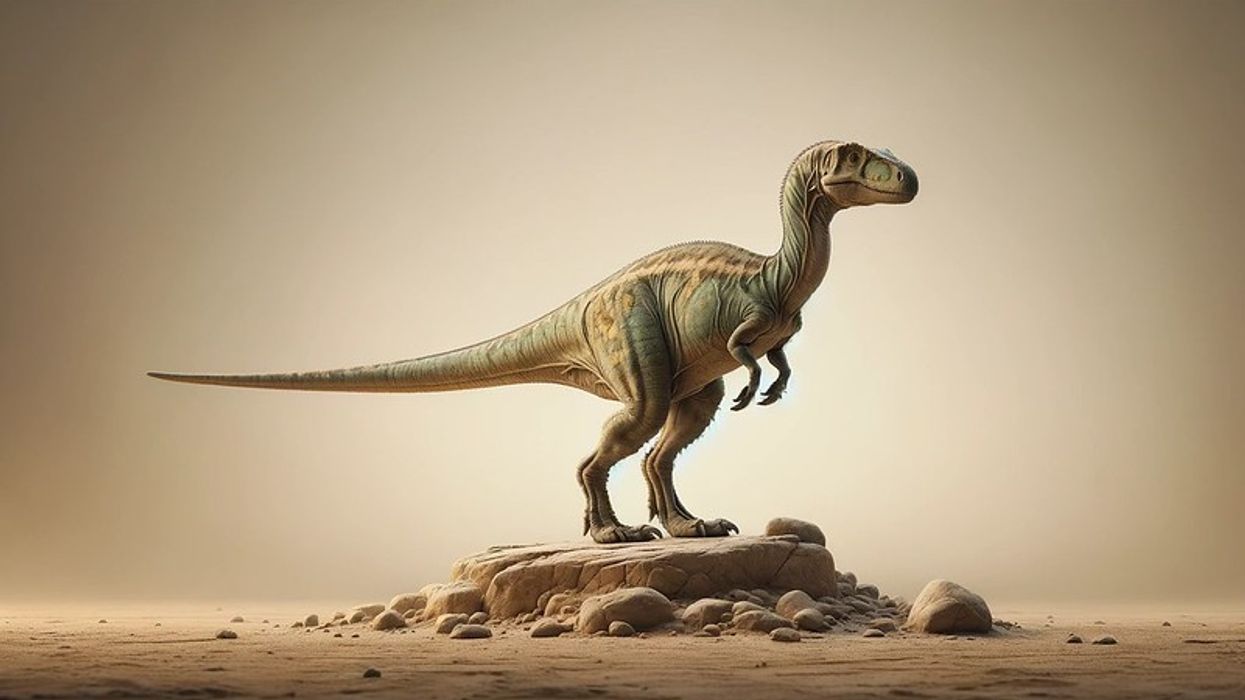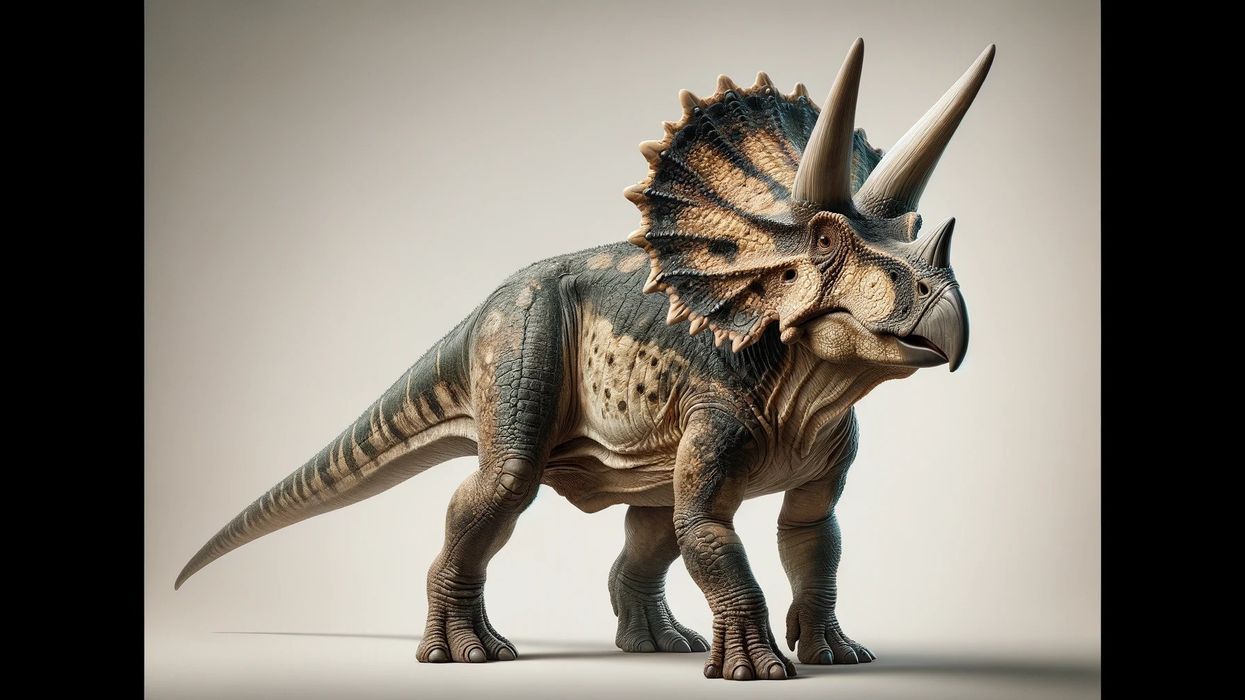Haopterus was one of the most interesting pterosaurs that lived during the Early Cretaceous period in the Barremian age. Its fossil remains were discovered in the Yixian Formation that lies in Liaoning, China, and were later named and described by Wang Xiaolin and Lü Junchang in 2001.
The name is a reference to the Chinese paleontologist Professor Hao Yichun and the Greek word 'pteron' meaning wing.
Thus, the meaning of the name becomes 'Hao's wing'.
The genus has a single species under it, H. gracilis, which is also the type species. The specific name is Latin for 'slender-built', referencing the nature of the metatarsals of the animal, which are a group of five bones in the foot.
The skull and some vertebrae from the fossils were found to be a bit damaged but the other bones were found to be somewhat well-preserved. Other bones discovered from the excavation site include its dorsal vertebrae, lower jaws, pectoral girdle, and a partial pelvis bone.
Haopterus can be considered unique because, unlike most other pterosaurs, it did not sport a bony crest atop its skull, which was found to be quite short.
Sharp, pointed teeth were found to cover two-thirds of the front of its upper and lower jaws.
They were widely-spaced and probably jutted out of the mouth in an interlocking fashion when the upper jaw met the lower. These features led scientists to believe that this pterosaur would have fed on fish by catching them while soaring over water bodies.
If you liked reading about this pterosaur, you would definitely love our Argentavis fun facts for kids and Ludodactylus fun facts for kids pages.
Haopterus Interesting Facts
Was the Haopterus a dinosaur?
Although it existed during the same time as dinosaurs and even lived among them, Haopterus was not a member of Dinosauria but was a flying reptile that belonged to the order Pterosauria.
How do you pronounce 'Haopterus'?
The name Haopterus was given by Wang Xiaolin and Lü Junchang in 2001. It translates from Greek to 'Hao's wing', and is phonetically pronounced as 'How-op-teh-russ'.
What type of prehistoric flying bird was a Haopterus?
This prehistoric flying reptile was a pterosaur. Members of Pterosauria were some of the first animals in history to have been able to fly.
Most of them had the common characteristics of large wings and bony head crests, although Haopterus did not have any crests on its skull.
Within Pterosauria, it was classified in the suborder Pterodactylidae upon discovery due to some of its features such as the sharp teeth and lack of a prominent crest on its skull.
A few years later, it was put into the group Ornithocheiridae as a basal member and has recently been classified as a member of the family Mimodactylidae as it shares common features with the other member of the family, Mimodactylus.
In which geological period did the Haopterus live?
The fossil remains of Haopterus have been dated back to around 124.6 million years ago. Thus, it would have lived during the Barremian age or the Aptian age of the Early Cretaceous period.
When did the Haopterus become extinct?
Although its fossils have not been dated back to later than the Early Cretaceous, it is likely that it would have survived until the end of the Cretaceous but would have met its end due to the Cretaceous-Paleogene extinction event that took place around 66 million years ago.
Where did a Haopterus live?
This genus of pterosaurs would have lived in what is now known as Liaoning, China since its fossils were first recovered from the Yixian Formation that is located in the Liaoning province of China.
What was a Haopterus's habitat?
Research on the deposits of the Yixian Formation has shown that the region would have been a temperate forest 124.6 million years ago. There would have been many lakes to support the piscivorous lifestyle of this animal, as well as forests full of a rich variety of small land animal species for it to feed on.
Who did a Haopterus live with?
The social structure of these pterosaurs is currently unknown due to a lack of research. However, the animal would have coexisted with other pterosaur species such as Ningchengopterus, whose fossils have also been found from the same region in China.
How long did a Haopterus live?
The length of the lifespan of a Haopterus is not currently known, but the average life expectancy of a pterosaur is estimated to have been in the range of 10-25 years.
How did they reproduce?
Like most reptiles, these animals were oviparous and laid eggs from which young ones emerged.
Haopterus Fun Facts
What did a Haopterus look like?
 *We've been unable to source an image of Haopterus and have used an image of Istiodactylus instead. If you are able to provide us with a royalty-free image of Haopterus, we would be happy to credit you. Please contact us at hello@kidadl.com.
*We've been unable to source an image of Haopterus and have used an image of Istiodactylus instead. If you are able to provide us with a royalty-free image of Haopterus, we would be happy to credit you. Please contact us at hello@kidadl.com.
Haopterus was a medium-sized pterosaur with a large wingspan. Although it was not very well-preserved, the length of a skull was estimated to be 5.7 in (14.5 cm), in which the lower jaw's length was found to be 5 in (12.8 cm).
The snout was very long and pointed. The teeth were sharp and pointed as well to catch prey efficiently.
These teeth covered two-thirds of the upper and lower jaws and interlocked when the jaws closed. The teeth were bigger in the front of the lower jaws and found to point towards the front as well.
The forelimbs and wings were robust with the ulna being longer in length than the wing metacarpal.
Its hindlimbs were relatively weaker and shorter in length but slender in build. These features meant that it would have walked on all its four limbs while on land.
The wing would have been so long that it would have reached above its head while it walked. From the remains of its bones that were found, the partial pelvic bone, the metatarsals, the dorsal vertebrae, and the femur were all very short.
How many bones did a Haopterus have?
Since a complete skeleton that consists of all parts of the Haopterus' body has not yet been found, its total number of bones is unknown.
How did they communicate?
It is unclear whether or how these pterosaurs communicated with each other but it is thought that they would have used some form of vocalizations or body language to communicate. In the pterosaurs that had head crests, it is theorized that the crest would have been used for species recognition or to attract mates.
How big was a Haopterus?
The length and height of Haopterus are currently unknown due to a lack of research and evidence.
How fast could a Haopterus fly?
Pterosaurs, in general, are estimated to have achieved speeds as high as 75 mph (120 kph), but no data is available regarding the exact speed or height at which a Haopterus could fly.
How much did a Haopterus weigh?
Since a complete fossil specimen of this genus of pterosaurs has not yet been discovered, its weight has not been estimated. However, pterosaurs are known to have weighed up to 550 lb (250 kg).
What were the male and female names of the species?
There were no sex-specific names for the male and female pterosaurs of this species and genus.
What would you call a baby Haopterus?
A baby Haopterus could have been called a flapling or a hatchling. These tiny animals could have been able to fly soon after hatching, but since they wouldn't have been able to fly during the first few days, their parents would have fed it and provided it protection from predators.
What did they eat?
The Haopterus' diet was earlier thought to be made up completely of fish, given the features of its teeth in the upper and lower jaws. It would have been able to catch fish quite easily with the help of its sharp and curved teeth while soaring above lakes and rivers.
However, it is now thought that they would have also fed on small insects or mammals that could be found on land.
How aggressive were they?
Pterosaurs would likely have been dangerous with their conical teeth and intimidating form, but given the small length and size of Haopterus, it would have only been aggressive towards smaller animals.
Did you know...
Out of the many pterosaur fossil remains found in the history of China, Haopterus was the first specimen that was discovered with a preserved skull.
What is the wingspan of the Haopterus?
The wingspan of this genus of pterosaurs was relatively large because of its giant wings, with a length of 4.43 ft (1.35 m). This was about 30 times less than the wingspan of much larger pterosaurs with even bigger wings.
Are Haopterus related to birds?
No, Haopterus are not related to birds. Though there could be some similarities in the skeletal structure of modern-day birds and pterosaurs, both groups of animals evolved from different ancestors and are not related.
Here at Kidadl, we have carefully created lots of interesting family-friendly prehistoric animal facts for everyone to discover! For more relatable content, check out these Scaphognathus facts and Jeholornis facts for kids.
You can even occupy yourself at home by coloring in one of our free printable Haopterus coloring pages.
*We've been unable to source an image of a Haopterus and have used an image of a pterosaur instead. If you are able to provide us with a royalty-free image of a Haopterus, we would be happy to credit you. Please contact us at hello@kidadl.com.









